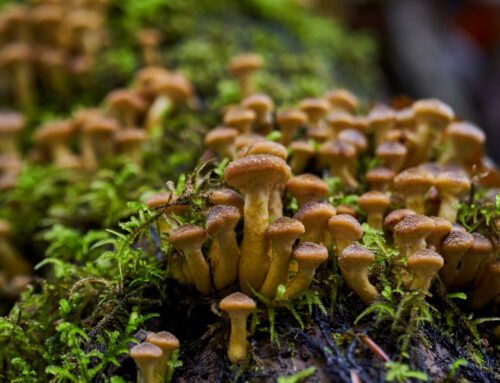No, no, we´re not going to talk about music today…despite some potential connections between the topic and some subgenres of heavy metal music such as death metal, black metal, sludge metal etc.
Our focus today are real heavy metals, I mean – chemical elements.
What are heavy metals and why are they problematic?
Device on which you are reading this contains following heavy metals: Lead, Cadmium, Mercury, Beryllium, Chromium, Gold and Platinum.
Cadmium, Lead, Beryllium or Mercury are toxic in smallest amounts for the majority of living organisms. Others heavy metals like Chromium (and also Zinc, Nickel, Copper and Cobalt) are so-called micronutrients – our body needs them in very tiny amounts for proper functioning. However, in higher dosis they are all toxic.
Precious heavy metals such as Platinum and Gold are not directly toxic for humans, except that some people are addicted to them.
Batteries of our electronic devices and electric cars contain Lithium – chemically actually lightest metal, in moderate dosis used to treat psychiatric disorders but in higher dosis heavily toxic for humans. Nickel, Cadmium and Cobalt are also in many batteries, all toxic in higher amounts.
Greatest contributor to the global heavy metal pollution is ore mining and industries such as chemical, metal or electronic are also posing a risk. Heavy metals are released to soils and waters and can be found in food products such as plant products and fish but also in children´s toys and drinking water 1.
Clearly, our technologies need heavy metals and will need them in the future. Anyway, for their safe use, two problems must be solved: 1) their environmentally-friendly mining and 2) their final safe disposal and recycling. Current physico-chemical approaches for heavy metal-bioremediation are often inefficient and/or expensive.
Again, microbiomes are a promising alternative for heavy metal-bioremediation.
How microbiomes can help bioremediation of heavy metals?
Microbes are organisms most heavily affected by heavy metal pollution. For example, heavy-metal-induced disruption of microbiomes in the soil is causing loss of soil structure, soil infertility, poor plant growth and soil erosion.
On the other hand, we shouldn´t forget that microbes are the oldest organisms on our planet with amazing repertoire of enzymes able to perform various functions. Microbial heavy metal-bioremediation includes application of bacteria, fungi or microalgae.
There are basically three ways how microbes can contribute to the bioremediation of heavy metals:
- Bioaccumulation – some microbes have the ability to transport heavy metals inside their cells and accumulate them. For this, a special set of genes is needed: to transport the metal across the cell membrane and special proteins (metallothioneins) which make complexes with the metal inside the cell. This microbial feature is not only used for bioremediation but also for extraction of valuable metals from ore (“bioleaching”).
- Biosorption – other microbes can absorb the heavy metals on their cell surface. For this, they even don´t need to be alive: chemical components of their dead cell-membranes will do the job.
- Biotransformation – by chemically reacting with heavy metals, certain microbes can change their structure. Instead of immobilizing them (like in bioaccumulation) they will make them less toxic or completely harmless 2.
Which examples for microbial bioremediation of heavy metals do we know?
Microbial bioaccumulation of heavy metals can be achieved by addition of selected bacteria directly in the contaminated soil, preventing accumulation of heavy metals in the agricultural plants. In some cases, these bacteria can also boost plant growth.
Composting is a method of adding mixture of organic materials with beneficial bacteria (compost). It is used for bioremediation of soil and solid wastes contaminated with heavy metals and other pollutants. It is similar to adding combination of prebiotic (food for beneficial bacteria) and probiotic (benefical bacteria) for humans. Composting includes biosorption and biotransformation.
Microbial biosorption from mining wastewaters can be combined with other physico-chemical methods (such as absorption to the columns, bioreactors, etc.). Microalgae are a promising approach for wastewater treatment, combining biosorption with bioaccumulation.
Newer approaches include application of genetically engineered microbes with higher capacity for biosorption or bioaccumulation of heavy metals 2–5.
Future directions for microbial bioremediation of heavy metals will include more test-studies with different candidate-microbes or microbial consortia and exploring their potential to absorb, accumulate or transform different heavy metals.
We are really looking forward to that!
In the next episode, we will discuss microbial remediation of radioactive contamination…
- Rebello, S. et al. Cleaner technologies to combat heavy metal toxicity. Journal of Environmental Management 296, 113231 (2021).
- Fashola, M. O., Ngole-Jeme, V. M. & Babalola, O. O. Heavy Metal Pollution from Gold Mines: Environmental Effects and Bacterial Strategies for Resistance. Int J Environ Res Public Health 13, E1047 (2016).
- Wang, S., Liu, T., Xiao, X. & Luo, S. Advances in microbial remediation for heavy metal treatment: a mini review. J Leather Sci Eng 3, 1 (2021).
- Chen, M. et al. Bioremediation of soils contaminated with polycyclic aromatic hydrocarbons, petroleum, pesticides, chlorophenols and heavy metals by composting: Applications, microbes and future research needs. Biotechnology Advances 33, 745–755 (2015).
- Leong, Y. K. & Chang, J.-S. Bioremediation of heavy metals using microalgae: Recent advances and mechanisms. Bioresource Technology 303, 122886 (2020).





